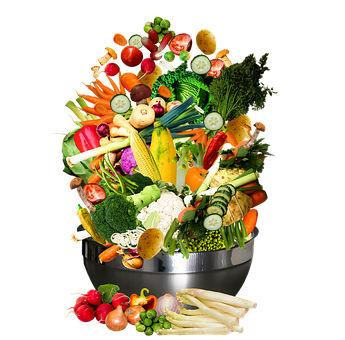Plant-based diets are a bit of a new trend that can make you lose weight, improve mental performance and help with preventing diseases like heart disease and cancer. In this blog article, we’ll take a look at some of the pros and cons of this diet type, as well as how to get started with plant-based nutrition.
Why Everyone Should Eat a Plant-Based Diet
When it comes to getting your daily protein, you don’t have to break the bank. There are plenty of plant-based sources that can provide the essential nutrient without any harmful side effects. Here are four reasons why everyone should consider incorporating more plant-based proteins into their diet: 1) Plant-based proteins are affordable. Compared to animal-based proteins, they’re often much cheaper and more affordable for those on a budget. In fact, a 2013 study published in The Journal of Consumer Research found that people who consumed plant-based proteins were less likely to feel hungry throughout the day and were more satisfied with their meals. 2) Plant-based proteins are environmentally friendly. When it comes to environmental damage, livestock farming is one of the worst practices out there. Not only does livestock farming produce large amounts of greenhouse gas emissions, but it also requires vast amounts of water and land. By switching to a plant-based diet, you can help reduce these environmental concerns. 3) Plant-based proteins are healthier options. According to the World Health Organization, plant-based diets are “the healthiest dietary pattern for humans” because they contain lower levels of saturated fat, cholesterol,
What Are the Benefits of Eating a Plant-Based Diet?
Vegetables are a great source of protein. They contain all the essential amino acids, which are the building blocks of muscle. Protein is important for our body because it helps to build and maintain muscle mass, regulate blood sugar levels, and provide energy. In addition, vegetarians and vegans have lower rates of heart disease and other chronic diseases than meat-eaters.
How to Get Protein from Vegetables
If you are looking for a way to get protein from vegetables, there are a few different options. You can either try to make a vegetarian meal out of vegetables, or simply add them to your diet as part of a balanced meal. Here are some tips on how to get the most out of your vegetable protein sources: – Try to include a variety of vegetables in your diet. This will help you get more nutrients and antioxidants, as well as protein. – Choose healthy options when choosing vegetables for protein. Avoid processed foods, sugar-laden fruits, and high-fat meats when looking for vegetable sources of protein. – If you are cooking with vegetables, try to use lighter oils and seasonings. These will give the vegetables more flavor and less fat. – Include plenty of water when eating vegetables for protein. This will help them stay hydrated and keep them from becoming dry and tough.
Recipe: Plant-based Protein Balls
If you’re looking for a healthy and convenient way to get protein from vegetables, look no further than these plant-based protein balls. They’re easy to make and can be stored in the fridge for a quick and easy snack. Plus, they’re perfect for pairing with a fresh salad or as part of a larger meal. To make these protein balls, you’ll need: 1 cup cooked quinoa 1/2 cup almond milk 1/4 cup diced red onion 1/4 cup diced green bell pepper 1/2 cup grated vegan cheese (optional) 1 teaspoon salt 1/4 teaspoon black pepper 1/3 cup chopped kale leaves To prepare the plant-based protein balls, mix together the quinoa, almond milk, onion, bell pepper, cheese (if using), salt and black pepper in a large bowl. Stir in the kale leaves until well combined. The mixture will be thick and sticky. Use your hands to form the mixture into 12-16 small balls. Store the balls in an airtight container in the fridge for up to 3 days.
Strategies for Plant-based Dieters
Protein can be found in a variety of foods, but many people opt to eat more vegetables in order to get their recommended amount. There are a number of ways that vegetarians and vegans can get protein from vegetables. Some people choose to eat vegetarian proteins such as tofu, seitan, tempeh, and legumes. These vegetarian proteins are easy to cook and taste good. They can also be mixed with other ingredients to create unique dishes. Other people choose to consume plant-based meats such as soy meats, seitan, and mock meats. These meats are made from soybeans, wheat gluten, water, salt, and spices. They are also high in protein and low in calories. Some vegetarians and vegans also choose to include animal-based products in their diets. These include eggs, dairy products, and fish. It is important to note that these foods should only be consumed occasionally or in small amounts in order to maintain a healthy diet.
Conclusion
Vegetables are a great source of protein, but often times they can be difficult to incorporate into a diet due to their high carb content. If you’re looking for ways to increase your intake of protein without having to resort to eating tons of processed food, try incorporating some vegetable protein powders into your daily routine. Not only will this help you reach your daily recommended intake of protein, but it will also keep you from packing on the pounds.


